(Under Construction …….)
Gold Panning
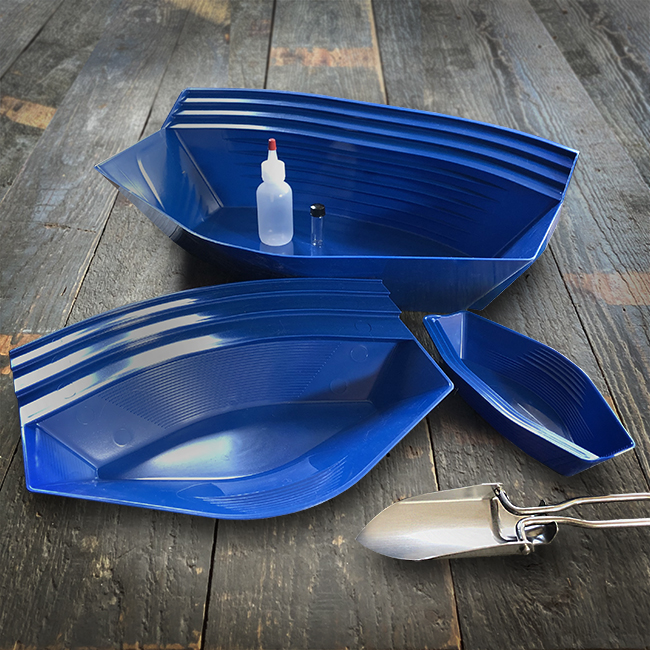
This Gold Claw Pan Bundle contains a three sizes of pans and comes with a First Gold Experience Kit containing paydirt with real gold in it, a snuffer bottle and a vial. The (smallest) Pocket Pan is a great option to carry in your backpack. The (medium sized) Original Pan is ideal to have at basecamp or in the car permanently, whilst the (biggest) Production Pan goes through loads of paydirt in a wimp. The pans are made from Tritan plastic, which makes it durable and virtually indestructible.
Musical Travel Instruments
Taylor GS Mini-e Koa
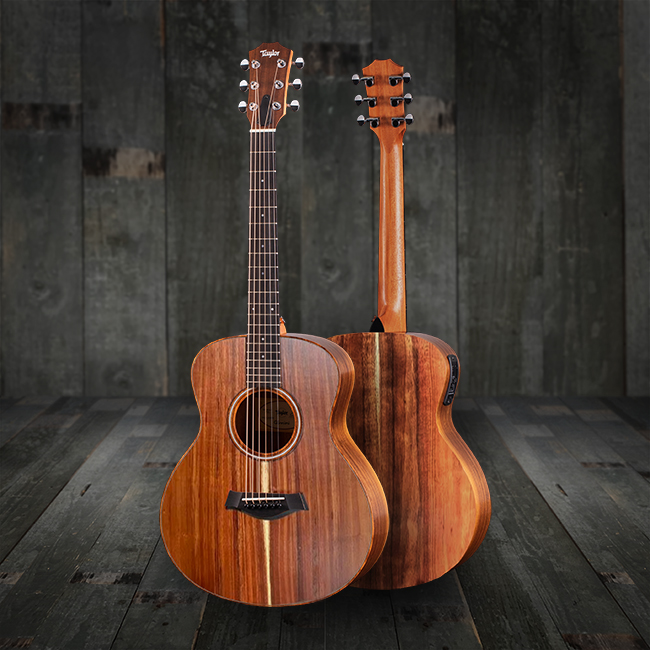
I use a Taylor GS Mini-e Koa as my travel guitar. This is a proper travel guitar for several reasons:
- Standard:
- 3/4 size, for easy playing and transport
- Small size, big voice
- all Hawaiian koa
- Solid top for excellent sound
- Laminate sides and back for durability
- Built-in pickup
- padded gig bag for protection
- Tweaks/Upgrades:
- I fitted titanium bridgepins (as I do on most of my guitars).
- I replaced both the bridge saddle and top nut for bone versions and made them considerably lower than the standard height.
- The trussrod cover is replaced with a version inlayed with my name.
I’m fortunate to own one with beautifully figured front and back wood. Whilst adirondack is my go to top for my full size gigging/performing guitars, this smaller guitar seem to benefit from having a Koa top (for my style of playing). An awesome little guitar!
Kai KCI 700 Ukulele
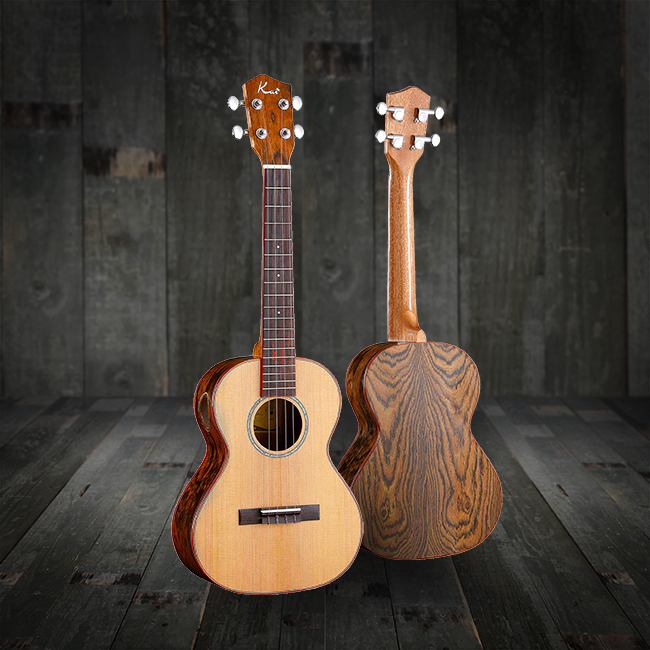
This Kai KCI 700 ukulele is a lot of instrument in a small package! it has a loud but balanced and clean sound, and awesome looks owing to the gorgeous bocote back and sides.
Cedar tops are my favourite for smaller ukuleles. The treble has fabulous presence without ever being shrill, and the bass register has depth, warmth but clarity as well. But the feature that sets this instrument apart is the presence of a soundport (the soundport in th side of the instrument). Most string instruments have a strong forward sound projectory, which means that the actual player hears only a limited part of what he/she/it plays. This soundport gives the player a real insight into the nuances of their playing and sound. The supplied gigbag has a generous 20mm thick padding, rucksack straps and a large external pocket. The sound, playability and build quality of the Kay KCI 700 is not inferior to the Kamoa Custom Shop Ukes and Ko’olau ukes I have owned (which cost up to fivefold of the Kai). This might be one of the best affordable concert ukes available.
Specifications:
- Solid Cedar top
- Bocote back and sides
- Nato neck, with abeautiful Butterfly inlay.
- Morado fretboard and bridge
- Padauk binding with BWB purfling
- 18 Frets
- Nubone nut and saddle
- High-gloss finish
- Chrome geared machine heads
- 35mm nut width
- Includes 20mm padded gigbag
- Strap button on bottom bout
Tin Whistle in D, by Carbony
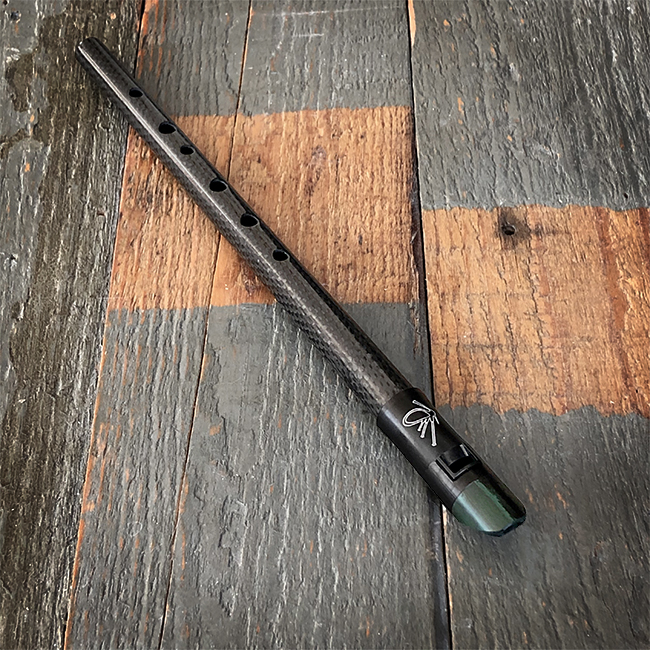
My Carbony Tin Whistle, in D, is made of carbon fiber with an anodized aluminium/ebonite mouthpiece. (My mouthpiece has a beautiful Irish-green flair.) The carbon fiber material is not susceptible to temperature fluctuations, keeping it in tune, even in the outdoors. The whistle is tunable though. The thin conical design creates a warm timbre in the low register. Good properties for taking it on outdoor trips are it’s weight (225 gram) and carbon fiber being virtually indestructible. This whistle plays very direct without noticable back pressure, as it’s tapered design allows for close finger spacing for rapid passage articulation and has accurate intonation in 3 registers. It’s sounds really clear and pure, no ‘chiff’, and produces a modest volume. It sounds very balanced across the octaves, which provides a pleasant compact flow of tones, without it taking much air. (approx. € 275 retail)
Fishing
DragonTail Kaida zx320 Tenkara Pack Rod
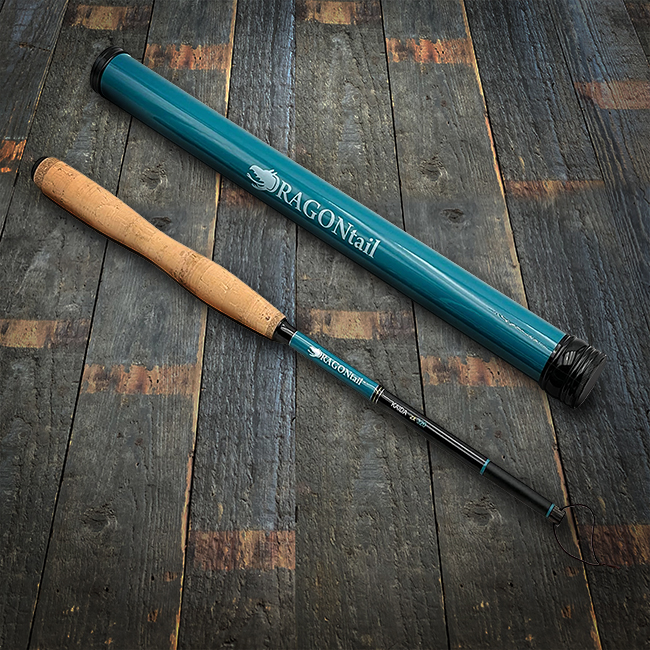
The DragonTail Kaida zx320 has some good characteristics. This rod will fit any backpack. A two-lengths zoom rod allows to fish it fully extended in open casting areas or zoom it down one length when casting area is overgrown and tight. It has a medium-soft action, just the right action to make the little mountain trout plenty of fun to catch. It’s great for soft presentation of weightless flies, fishing Trout up to 35cm, or to help fighting the invasive bluegill population (a great pan-fish though).
Rod Specs:
- Carbon Fiber, with a slight blend of fiberglass
- 6:4 or 5:5 action
- Extended lengths: 286,cm, 319cm
- Collapsed Length: 45cm
- Weight: 70 g (17,9 grams per linear meter)
- Rod Tube Length: 48cm
- CCS/RFI: 14 pennies/4.9, 16 pennies/5: Slow, Full Flex
- My lines:
- Level lines, rod length (300cm), weight 3X or 3.5X, 0,2mm, 4,2kg
- Tippet, 100cm, weight 4X, 0,18mm, 3kg
Moonlit ‘Reel’ Fly Fishing Gear
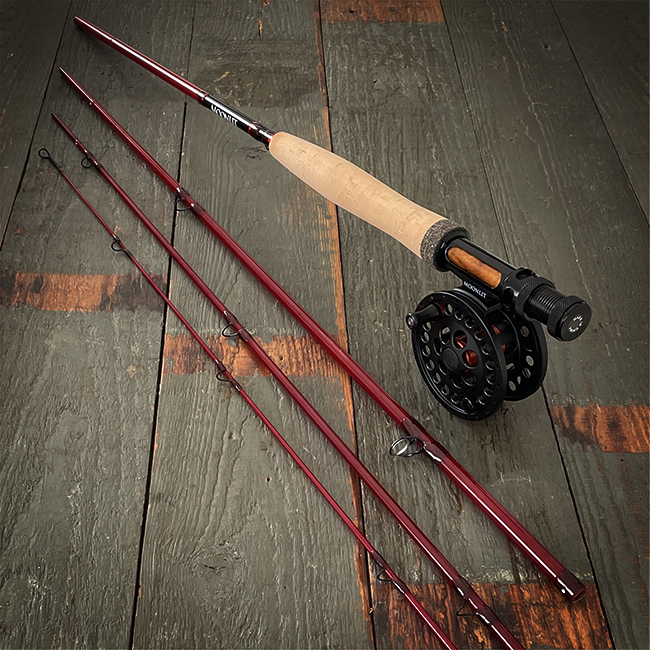
I oppose to the use of the term “western” fly fishing as it is often used in the US. As an alternative for my Tenkara rods I have a Moonlit Lunar S-GLASS Fiberglass Fly Rod and Moonlit Eclipse Reel combination for ‘reel’ fly fishing. Fishing big water, stillwater, or water where I need to get flies deep, Tenkara fishing isn’t allways my first choice. The limited casting ability limits the types and sizes of water that can be fished. Furthermore tenkara rods and tenkara flies are not going to be able to stand up to saltwater bonefish or tarpon— they’ll snap the line as they touch it. That’s where this set comes in.
The Lunar rod, is a 2,3 meter long fiberglass rod. The fast recovering tip, combined with it’s progressive action, make these smooth and accurate casting rods.
The Eclipse reel is very simple to operate. The drag system is easy to set and the reel capacity is more than adequate. I use the #3/#4 reel, which has a 75mm spool, allowing the use 37 meters of 9 kg (20lb) backing, up to 30 meters of WF #3 fly line, 2 meters of leader and some tippet.
Lazy Trap Fishing
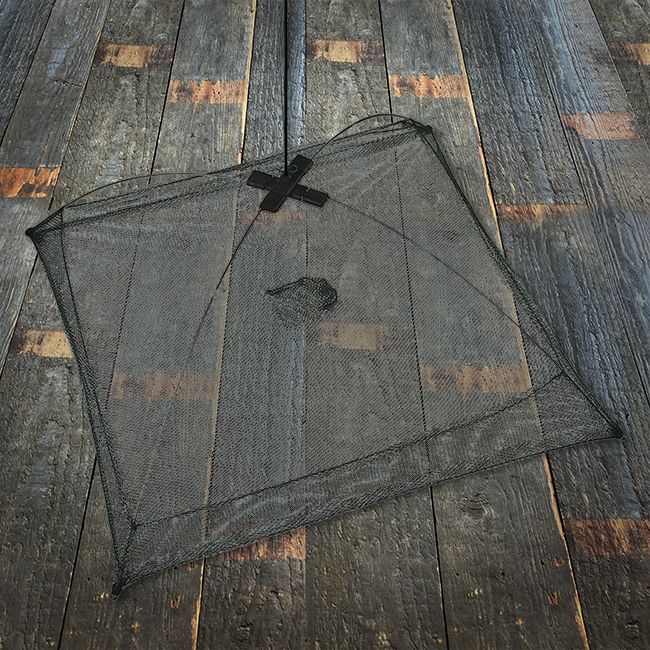
The most relaxed way of fishing is by using fish traps, ofwhich the simplest is this square sinking net. It is placed on the river bottom. All you have to do is put bait like offal (fish guts or any other left over) in the little center pocket, lower it down to the river bottom, and check it every hour. It might take some stones to give it enough weight depending on the current. This is an awesome way to catch crustaceans, including shrimp, crab, lobster and crawfish. (Kill them ethically, do not throw them in boiling water.)